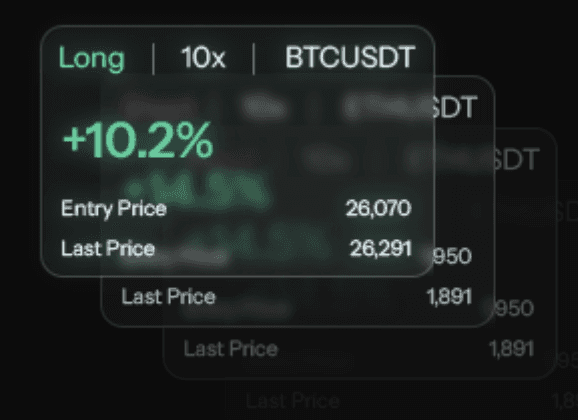/
Technical Indicators Cover Almost Every Aspect of an Asset’s Attributes. What Are the Categories?
/
Technical Indicators Cover Almost Every Aspect of an Asset’s Attributes. What Are the Categories?
/
Technical Indicators Cover Almost Every Aspect of an Asset’s Attributes. What Are the Categories?
Technical Indicators Cover Almost Every Aspect of an Asset’s Attributes. What Are the Categories?
Aug 17, 2023
Technical indicators give you ability to have eyes like a hawk when analyzing the market and asset attributes. We’ll be taking a look on asset attributes and categories of technical indicators. There are a vast amount of technical indicators, each indicating a different element of the asset’s price movement.
Attributes of an Asset
What exactly are you trading? An asset and there different classes in which an asset will fall under. For instance, attributes which are represented by NFTs can vary from unique serial numbers to dynamic information such as a location of the NFT. But we aren’t discussing about NFTs in our case.
Classes:
Reserve Assets: This contains two coins, Bitcoin and Ethereum.
Stablecoins: Cryptocurrencies that have stable store of value (e.g USDC and Tether).
Cryptocurrencies: Digital form of payment as it is a medium of exchange, a store of value, and a unit of account.
Platforms: Public blockchain platforms such as Cardano which provide some of the tools of blockchain (e.g smart contracts).
Of course, we can dive deeper into asset allocation and portfolio construction but that’s certainly a topic for another day. Depending on what kind of attributes you are looking for, you will need to switch between fundamental analysis which focuses on an asset's 'true value' by calculating external factors and intrinsic value, and technical analysis is based purely on the price charts of an asset. Technical indicators are almost all what you need for trading as you are only concerned of the asset’s prices and indicators give you the best overview of an asset.
Categories of Technical Indicators:
Though you may mainly use trend indicators and oscillators the most, let’s look at some of the various options available on the table.
Trend Indicators:
Trend indicators simply measure trend direction.
MA: An average of closing prices in a time frame that can help identify a trading opportunity.
Parabolic SAR: Calculates trailing stop points to use with long and short positions.
Oscillators (Momentum):
RSI: Aims to measure the speed and size of an asset's price movements.
MACD: Primarily used to trade trends which measures the relationship between two EMAs.
Stochastic Oscillator: Shows the speed and momentum of price movement.
Volume Indicators:
VMA: Aids in the detection of volume trends and possible breakouts or breakdowns.
OBV: Generates a running total that reveals whether traffic is entering or exiting an asset.
Volatility Indicators:
Bollinger Bands: Assess price volatility and identify potential buy or sell signals. Combine a simple moving average (SMA) and a measure of price volatility via standard deviations (SD).
ATR: Shows the average price variation of assets within a given time period.
Conclusion
As you can see, there are numerous of indicators in technical analysis. Be sure to try them all and implement a few of them simultaneously in order to grab the best picture possible of the markets. Using different types of technical indicators, we can be able analyze in detail every aspect of an asset’s attributes. Using technical analysis for analyzing an asset may seem trivial but is vitally important!

Technical Indicators Cover Almost Every Aspect of an Asset’s Attributes. What Are the Categories?
Aug 17, 2023
Technical indicators give you ability to have eyes like a hawk when analyzing the market and asset attributes. We’ll be taking a look on asset attributes and categories of technical indicators. There are a vast amount of technical indicators, each indicating a different element of the asset’s price movement.
Attributes of an Asset
What exactly are you trading? An asset and there different classes in which an asset will fall under. For instance, attributes which are represented by NFTs can vary from unique serial numbers to dynamic information such as a location of the NFT. But we aren’t discussing about NFTs in our case.
Classes:
Reserve Assets: This contains two coins, Bitcoin and Ethereum.
Stablecoins: Cryptocurrencies that have stable store of value (e.g USDC and Tether).
Cryptocurrencies: Digital form of payment as it is a medium of exchange, a store of value, and a unit of account.
Platforms: Public blockchain platforms such as Cardano which provide some of the tools of blockchain (e.g smart contracts).
Of course, we can dive deeper into asset allocation and portfolio construction but that’s certainly a topic for another day. Depending on what kind of attributes you are looking for, you will need to switch between fundamental analysis which focuses on an asset's 'true value' by calculating external factors and intrinsic value, and technical analysis is based purely on the price charts of an asset. Technical indicators are almost all what you need for trading as you are only concerned of the asset’s prices and indicators give you the best overview of an asset.
Categories of Technical Indicators:
Though you may mainly use trend indicators and oscillators the most, let’s look at some of the various options available on the table.
Trend Indicators:
Trend indicators simply measure trend direction.
MA: An average of closing prices in a time frame that can help identify a trading opportunity.
Parabolic SAR: Calculates trailing stop points to use with long and short positions.
Oscillators (Momentum):
RSI: Aims to measure the speed and size of an asset's price movements.
MACD: Primarily used to trade trends which measures the relationship between two EMAs.
Stochastic Oscillator: Shows the speed and momentum of price movement.
Volume Indicators:
VMA: Aids in the detection of volume trends and possible breakouts or breakdowns.
OBV: Generates a running total that reveals whether traffic is entering or exiting an asset.
Volatility Indicators:
Bollinger Bands: Assess price volatility and identify potential buy or sell signals. Combine a simple moving average (SMA) and a measure of price volatility via standard deviations (SD).
ATR: Shows the average price variation of assets within a given time period.
Conclusion
As you can see, there are numerous of indicators in technical analysis. Be sure to try them all and implement a few of them simultaneously in order to grab the best picture possible of the markets. Using different types of technical indicators, we can be able analyze in detail every aspect of an asset’s attributes. Using technical analysis for analyzing an asset may seem trivial but is vitally important!

Technical Indicators Cover Almost Every Aspect of an Asset’s Attributes. What Are the Categories?
Aug 17, 2023
Technical indicators give you ability to have eyes like a hawk when analyzing the market and asset attributes. We’ll be taking a look on asset attributes and categories of technical indicators. There are a vast amount of technical indicators, each indicating a different element of the asset’s price movement.
Attributes of an Asset
What exactly are you trading? An asset and there different classes in which an asset will fall under. For instance, attributes which are represented by NFTs can vary from unique serial numbers to dynamic information such as a location of the NFT. But we aren’t discussing about NFTs in our case.
Classes:
Reserve Assets: This contains two coins, Bitcoin and Ethereum.
Stablecoins: Cryptocurrencies that have stable store of value (e.g USDC and Tether).
Cryptocurrencies: Digital form of payment as it is a medium of exchange, a store of value, and a unit of account.
Platforms: Public blockchain platforms such as Cardano which provide some of the tools of blockchain (e.g smart contracts).
Of course, we can dive deeper into asset allocation and portfolio construction but that’s certainly a topic for another day. Depending on what kind of attributes you are looking for, you will need to switch between fundamental analysis which focuses on an asset's 'true value' by calculating external factors and intrinsic value, and technical analysis is based purely on the price charts of an asset. Technical indicators are almost all what you need for trading as you are only concerned of the asset’s prices and indicators give you the best overview of an asset.
Categories of Technical Indicators:
Though you may mainly use trend indicators and oscillators the most, let’s look at some of the various options available on the table.
Trend Indicators:
Trend indicators simply measure trend direction.
MA: An average of closing prices in a time frame that can help identify a trading opportunity.
Parabolic SAR: Calculates trailing stop points to use with long and short positions.
Oscillators (Momentum):
RSI: Aims to measure the speed and size of an asset's price movements.
MACD: Primarily used to trade trends which measures the relationship between two EMAs.
Stochastic Oscillator: Shows the speed and momentum of price movement.
Volume Indicators:
VMA: Aids in the detection of volume trends and possible breakouts or breakdowns.
OBV: Generates a running total that reveals whether traffic is entering or exiting an asset.
Volatility Indicators:
Bollinger Bands: Assess price volatility and identify potential buy or sell signals. Combine a simple moving average (SMA) and a measure of price volatility via standard deviations (SD).
ATR: Shows the average price variation of assets within a given time period.
Conclusion
As you can see, there are numerous of indicators in technical analysis. Be sure to try them all and implement a few of them simultaneously in order to grab the best picture possible of the markets. Using different types of technical indicators, we can be able analyze in detail every aspect of an asset’s attributes. Using technical analysis for analyzing an asset may seem trivial but is vitally important!

Supercharge your trading game with Market Mapper today!




